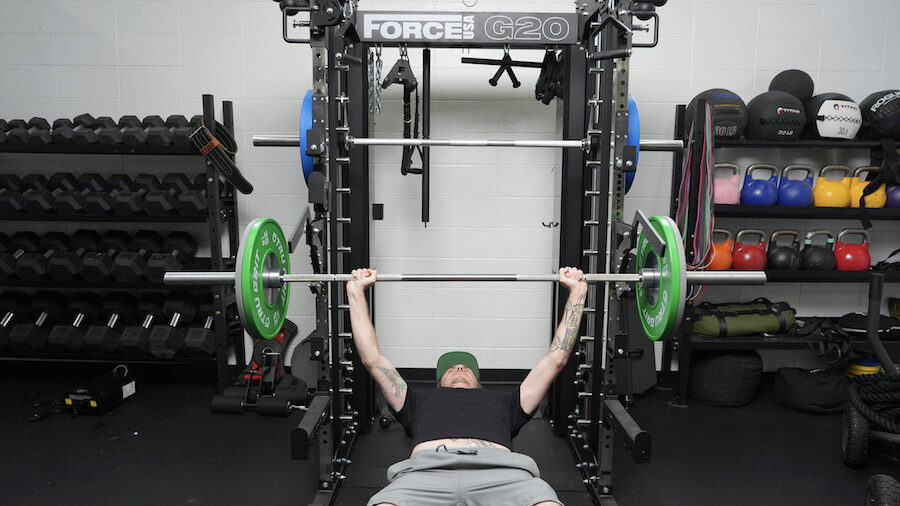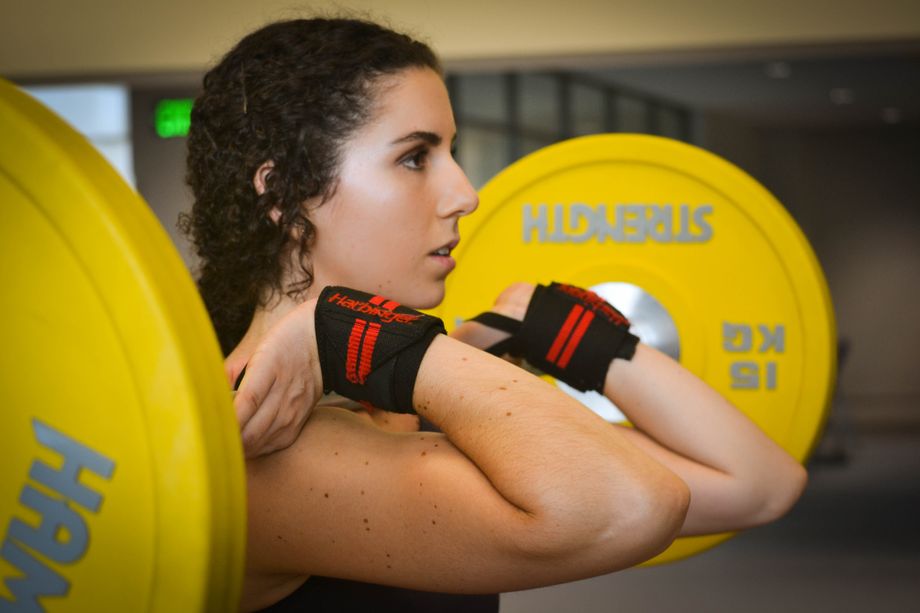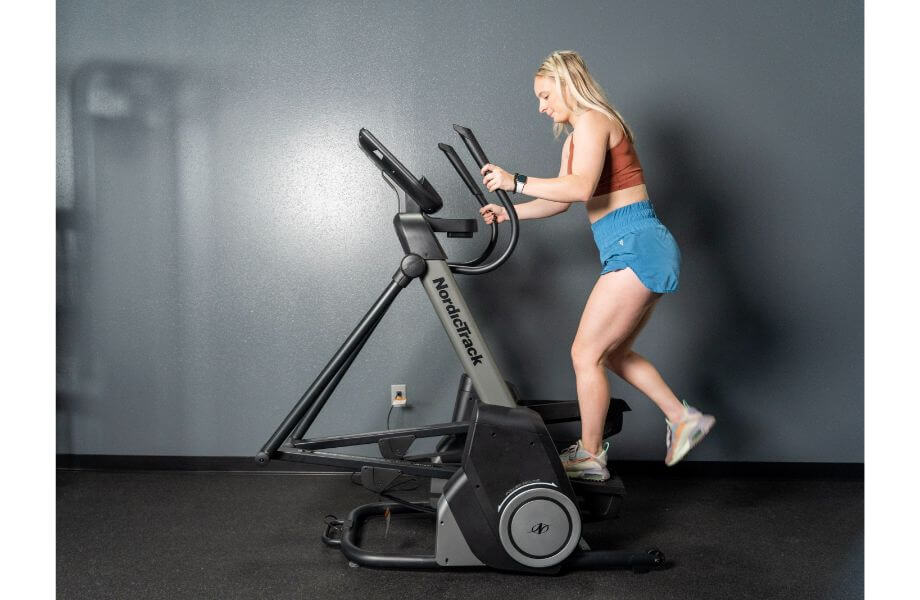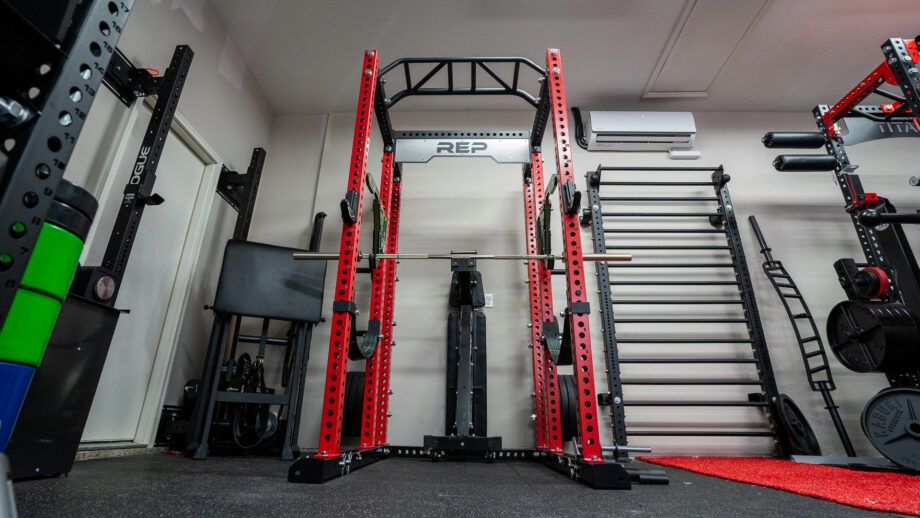The term progressive overload is a bit elusive and often lends itself to different interpretations. Have no fear, because progressive overload is merely a concept in which you can apply to your training in a variety of ways.
What you need to know is that when your body starts to adjust to your workout routine, you will eventually need to increase the stimulus your body undergoes to make further improvements. This can be done in a variety of ways, including changing the repetition range, number of sets performed, or weight on the barbell.
Progressive overload is one of the main principles of strength training that coaches, personal trainers, and lifters have to address to keep advancing. To keep progressing, lifters have to continually learn new movements, practice them, and add stimulus to make the same movement harder.
Progressively adding new stimulus by way of weight, reps, sets, range of motion, and manipulating rest time can help you avoid plateaus in training and reduce overall risk of injury by not overtraining. The way you slowly overload stimulus to your training routine is a personal experience and influenced by your desire for muscle growth or the ability to lift heavier weights.
Progressive Overload Explained
Simply put, progressive overload means gradually increasing a stimulus in your training, such as load, repetitions, or even difficulty in movement.
When you’re learning a new lift, you often practice with your own bodyweight or a very light load to master the movement pattern. Over time, you might increase how much weight you use on the movement.
For example, when learning the squat, you might learn with your own bodyweight, progress to a goblet squat, and eventually the barbell back squat. For some individuals, it might take just a few sessions to go from learning the squat to squatting with an Olympic barbell on your back.
For Beginners
If you’re new to strength training, it’s important to master the foundational movements with proper form using just bodyweight before adding additional resistance.
Kate Meier, GGR’s head of content and a NASM certified personal trainer, emphasizes how important this is for someone who is untrained. “Beginners must demonstrate control and healthy movement before we put a barbell on their backs. If there are issues with someone’s mechanics and they add weight before those issues are corrected, there is an increased risk for injury.”
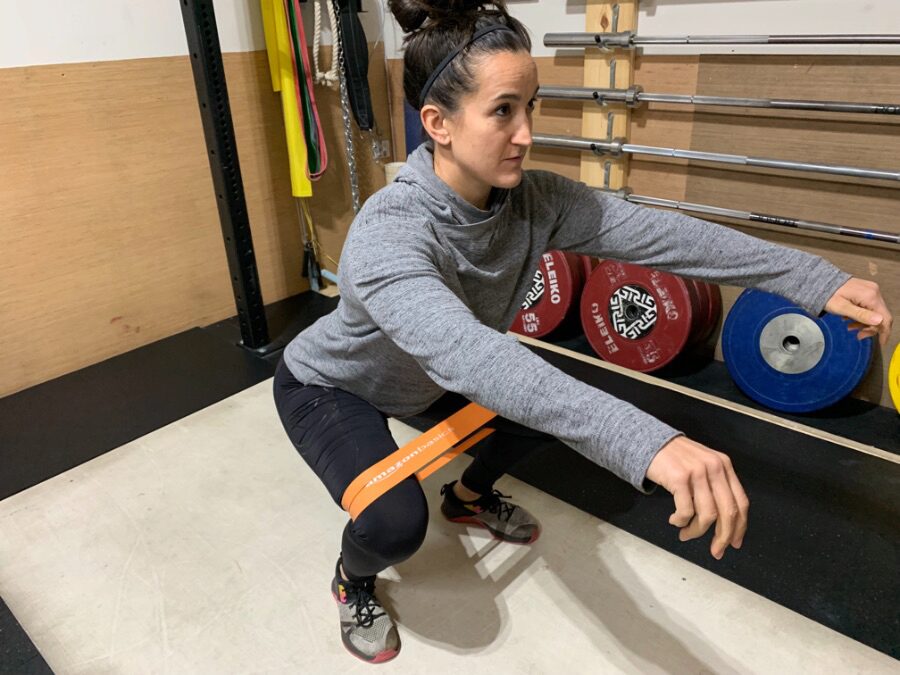
Once form is there and you begin to add weight, progression can happen quickly for people. This is where the expression “newbie gains” comes from. Novice lifters often experience rapid strength gains and seemingly continue to progress in weight every time they get under a barbell. If only that type of linear progress could persist!
Alas, the truth is the “newbie” effect tapers off over time. In fact, according to the National Strength and Conditioning Association (NSCA), early strength gains within the first few months are often attributed to neurological adaptations—meaning that the “newbie” effect is often the brain coordinating with the body to tell muscle membranes to stimulate a particular muscle group and muscle cells.
For Seasoned Lifters
For those who have been lifting for some time, new strength gains are harder to make. The body and the brain have had time to coordinate and adapt to certain stimuli. For new strength gains to take place, the seasoned lifter needs new stimulus by adding training variables.
Progressive overload can be simply translated into: Doing more over time. And doing more can look like adding repetition, volume, load, range of motion, or increasing the overall difficulty of an exercise.
The concept of progressive overload is highly adaptable for your individual needs—according to the NSCA, choose an overload method that is “specific to [your] desired adaptations.” If you’re trying to increase endurance, you might try manipulating your rest time. If you’re training to improve strength, you could gradually add heavier loads or perform more repetitions with the same load.
By slowly (and consistently) testing your capabilities and increasing the demands on your body over time, your body gets stronger and develops muscle mass without overtraining. It’s also important to mention your overload method is unique to you. Depending on where you are in your fitness journey, you can make incremental changes with bodyweight exercises, resistance bands, or dumbbells—not all progress is equated to weight on the barbell.
Benefits of Progressive Overload
The benefit of progressive overload is that you can continue to improve your performance and overall strength long after the “newbie” phase starts to fizzle. The act of incorporating small and tangible changes to your workout routine helps you continue to develop relative to your fitness goals and minimizes risk of injury.
Whether you’re trying to increase muscle mass or lift heavier weights, progressive overload is a safe way to increase the demands on your body’s musculoskeletal system because it’s progress is done little by little over time.
In a study on periodization, it is addressed that “stress to the muscle must be progressively increased as it becomes capable of producing greater force, power, or endurance.” Periodization is a concept similar to progressive overload–it’s a principle that phases out variables over time to create a systematic approach to long-term training. The same study states that when an “athlete does not continue to adapt, he or she will eventually plateau and regress,” which is why new stimulus is the ultimate recipe for lasting success.
How Do You Perform Progressive Overload?
There are many ways to have your program incorporate progressive overload. However, it’s important to remember that your journey to getting stronger is not only highly individualized, but it’s also not linear.
Progress can be made in a variety of ways when it comes to resistance training. Above all else, before adding a progression to your weight training program, you’ll need to master an exercise and maintain good form and control throughout the entire set.
You will have to experiment with different types of variations and track what methods have worked for you. When you keep track of your lifts, reps, and sets, you can begin to collect data and can implement new variations of training based on what has worked (or not worked) for you in the past.
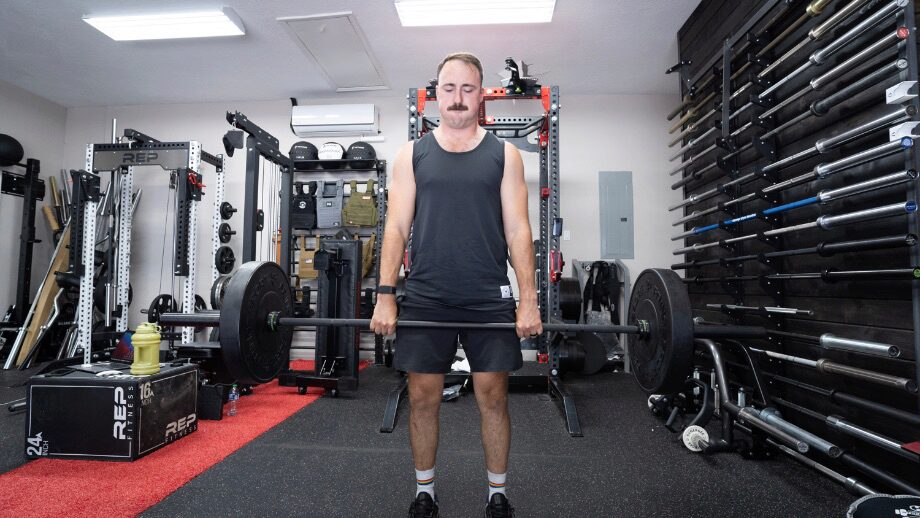
Progressive overload training methods work for both strength athletes (like powerlifters) and individuals training for muscle size (like bodybuilders). A gradual overload method works for both types of training because there are so many different approaches on how to increase training stimulus.
Here are some common ways lifters incorporate progressive overload principles into their training programs:
Load
Increase the amount of weight or resistance used. For example, a program could include no changes to reps or sets, but instead increase the load gradually each week.
Repetition
Increase the amount of reps performed and keep the load the same. For example, you can focus on keeping the bar weight the same on a back squat and increase the number of repetitions the next week by one or two reps.
Volume
Increase overall training volume by the number of sets performed, keep the load the same. For example, on a deadlift you can keep the weight and number of reps per set the same, but add one or two more sets to the total deadlifts performed.
Rest
Decrease your rest time between sets, but keep the load and volume the same. For example, if you have 5 sets of 5 reps on the back squat, set a rest timer to decrease your rest time, which subsequently increases your training density and makes the training session more intense with down time.
Range of Motion
Increase the distance you have to lift without changing the load. For example, you can incrementally increase your squat depth over time without changing the weight on the bar; the lift becomes harder because you’ll bring it through a larger range of motion.
Frequency
Lifting the same load and volume more often. For example, you might have one lower body day and one upper body day; you can increase training frequency by adding another day or two with similar load, reps, or volume.
Degree of Difficulty
Increasing the difficulty of certain exercises, going from low-skill to high-skill exercises. For example, you might integrate the Bulgarian split squat—with the back foot elevated—into your routine after mastering the traditional split squat with both feet on the ground.
Progressive Overload Examples
Progressive overload is a principle that can take place within a single training session, over the course of a week or two, or gradually over a training block.
For example, during a single weightlifting session, you might notice that your dumbbell bench press at 25 pounds, for 3 sets of 10 reps, doesn’t feel quite as challenging as it did the last week. On that day, you might decide to try 30-pound dumbbells for your remaining sets and continue to rep out sets of 10.
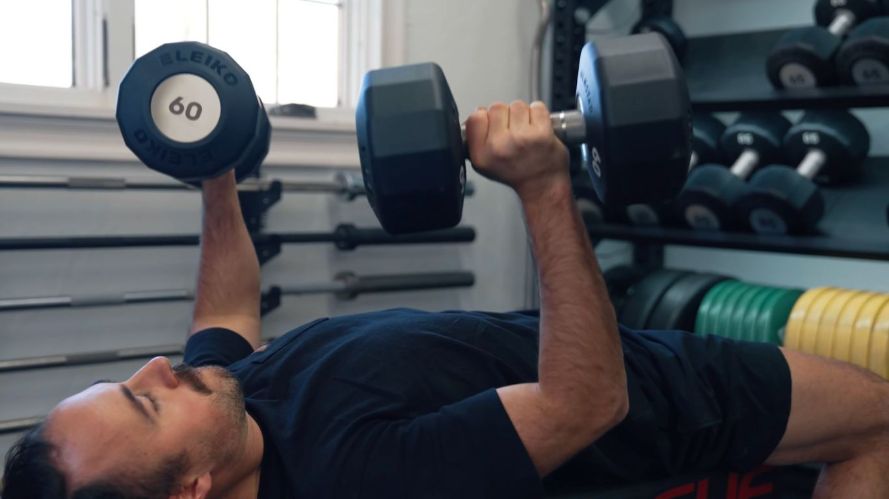
That slight increase likely didn’t happen on the first day you tried a dumbbell bench press. As you practiced the movement, your body gradually adapted, prepared for the next adaptation. What happens from here? Will you be able to keep grabbing heavier weights until you’re eventually repping out 100 pounds?
The short answer is no, probably not. Over the course of a few weeks or months, the 30-pound dumbbell bench press might gradually feel easier, but increasing five to ten pounds is not an easy feat for the seasoned lifter. To continue to stimulate your muscles, you will have to initiate change, because eventually the body will adapt to lifting 30 pounds over and over again at 3 sets of 10 repetitions.
Using the example of 30-pound dumbbell bench press for 3 sets of 10 repetitions, here are some progressive overload tactics you can apply:
- Stay at the same weight, but add additional sets=30 pounds (4 sets x 10 reps)
- Stay at the same weight and sets, but add repetitions=30 pounds (3 sets x 12 reps)
- Increase weight, but drop the rep range by 2-4 repetitions=35 pounds (3 sets x 8 reps)
- Decrease rest time, but keep weight, reps, and sets the same=30 pounds (3 sets x 10 reps) with 60-second rest
We should also mention a well-known training method here called the German Volume Training method, which involves ten sets of 10 repetitions, and has been traditionally used for increasing muscle mass. However, one study determined that a modified version of the German Volume Training might be more effective at building muscle and minimizing the effects of overtraining.
This study took a group of 19 men that “were randomly assigned to 6 weeks of 10 or 5 sets of 10 repetitions for specific compound resistance exercises included in a split routine performed three times per week.” The study found that 4 to 6 sets per exercise were optimal for maximizing hypertrophy training effects, “as it seems gains will plateau beyond this set range and may even regress due to overtraining.”
So while yes, you want to continually challenge your weight, rep or set schemes, or the general difficulty level, research does seem to indicate that 4 to 6 sets could be the magic number for muscle gain.
Safety Tips
For optimal safety, proper form, mastering movement patterns, and smart training are the foundation of making gradual progress.
Good Mechanics Comes First
Bodyweight and low-resistance exercises need to be performed well before choosing to increase the difficulty—whether that be with heavier weights, increased volume, or changing the rep range.
Prevent Overtraining
It might be tempting to go balls to the wall in order to make some gains, but lifter beware. Consider these things to prevent overtraining.
- Proper recovery: This includes adequate sleep, proper nutrition and hydration, utilizing tools like foam rollers or massage guns, and managing stress levels.
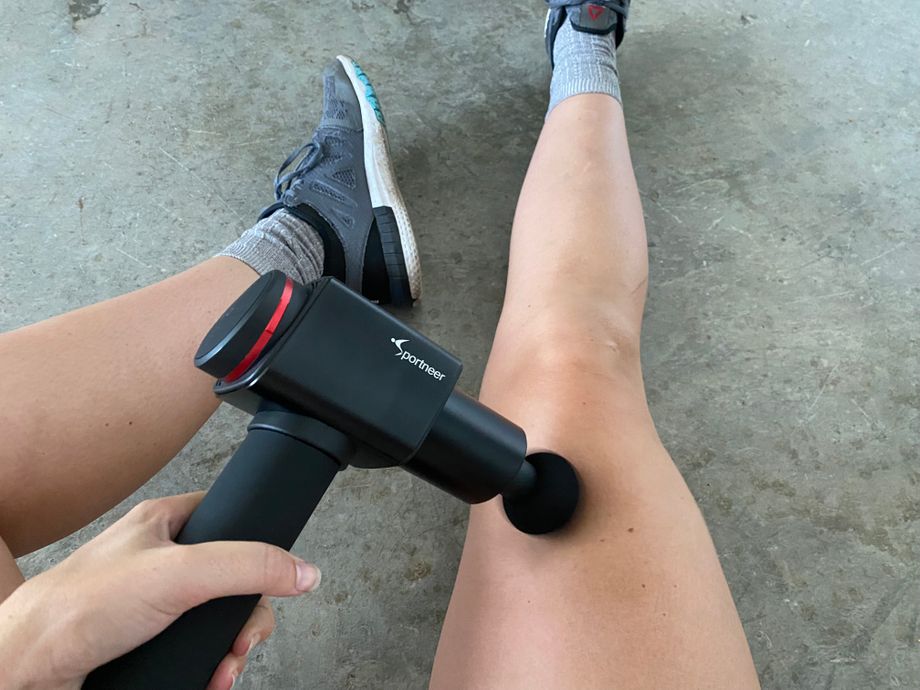
- Rest days: Your body needs rest days to recoup and repair in order to continue progressing. For most people, lifting heavy weights three or four times per week is more than enough to see progress, and will also provide enough downtime for your body, mentally and physically.
- Deloads: While the point of progressive overload is to add a layer of difficulty to promote muscle and strength growth, it’s also important to give your body a rest. “Taking an entire deload week can be great for the body,” says Kate. “It basically means you drop intensity on your workouts for a week, which you can accomplish through lowering volume, weight, or any other variable to allow your body to essentially reset. You can still exercise and keep the body moving, but you get a physical and mental rest from hard training.”
Final Verdict on Progressive Overload
Here’s what you need to remember about progressive overload: It’s a method to prevent training plateaus, continuing to create stress on your muscles so they undergo stimulus with gradual change.
It’s an amazing thing for the human body, to be able to adapt to stress. For this reason, progress will peter out if you’re always performing the same exact exercise, with the same weights, and the same number of repetitions and sets.
FAQs About Progressive Overload
What is progressive overload in simple terms?
Progressive overload is a concept that helps lifters and athletes avoid plateaus in training. The body starts to adapt to any given workout routine. Progressive overload is a concept that introduces small changes over a period of time to increase stimulus on the body. If the stimulus (load, reps, volume, etc.) does not change over time, your progress will be limited.
What are some examples of progressive overload?
A push-up is a good example of how to incorporate progressive overload training. Let’s say you’re learning push-ups for the first time ever. Starting on an incline surface can help you learn the movement and allow for high-repetition ranges to practice this new move. When that becomes easy, it’s time to move the push-ups to the floor. But what if that’s too much of a jump? Push-ups from the knees can help acclimate to the new range of motion, eventually transitioning to a traditional push-up position focused on a slow eccentric negative push-up. Eventually, your goal will be to increase how many full-range-of-motion push-ups you can do, then play with variables like time, number of reps, as well as even weighted push-ups.
How do you do progressive overload?
There are many methods to gradually overload your muscles. The most common way to start overloading is to incorporate a gradual increase in resistance or weight. Overall weight can only go so far, so another common way to use the principle of progressive overload is to increase overall volume by manipulating the number of reps or sets performed on a certain movement.
What are common methods for progressive overload?
Progressive overload can take place when you manipulate one or more of the following training factors: load (weight), volume (sets), repetitions, rest time, range of motion, frequency of training, and difficulty of exercise.


